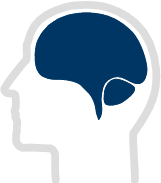International Graduate School of Neuroscience

Colloquium
How large spaces are represented in hippocampus
Wednesday, June 22, 2016, 11 a.m., Seminar Room FNO - 01 / 117
- Kechen Zhang
- Johns Hopkins University, School of Medicine, Baltimore USA
Earlier experiments of hippocampal place cells in rats were confined to relatively small chambers, which were smaller than the natural habitats of wild rats by at least two orders of magnitude. More recent experiments in larger environments show that a place cell typically has multiple, irregularly spaced place fields, rather than a unique place field as in a small environment. Many computational models, especially those with attractor maps embedded in a recurrent network, are often based on the experimental data from small environments, and their predictions of rigid correlations of place cell activities are incompatible with the new data. Existing evidence indicates that place cells are recombined with near maximal flexibility to represent a large space, presumably forming a cognitive map with maximal representational capacity. A seamless large spatial map may potentially emerge as a quasi-continuous attractor in a recurrent network by unsupervised learning. There are several theoretical advantages of such a system, including robustness against input noise, simultaneous representation of conflicting cues, and easy integration of nonspatial information. These results suggest that a flexible, combinatorial map might be a basic computational building block of hippocampal function.
Host
- Laurenz Wiskott
Theory of Neuronal Systems, Institute for Neural Computation, Ruhr University Bochum
